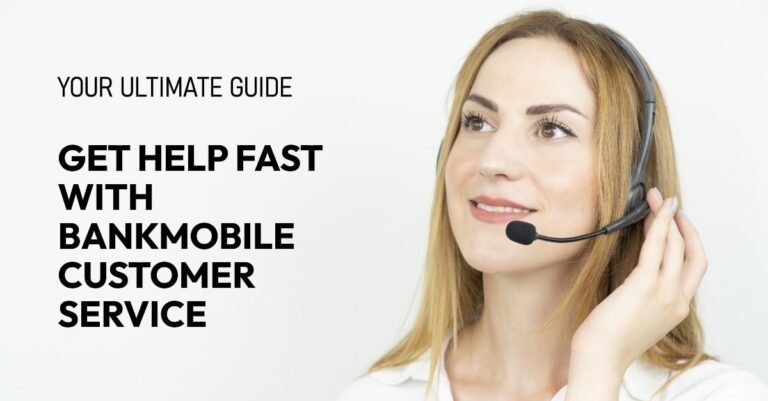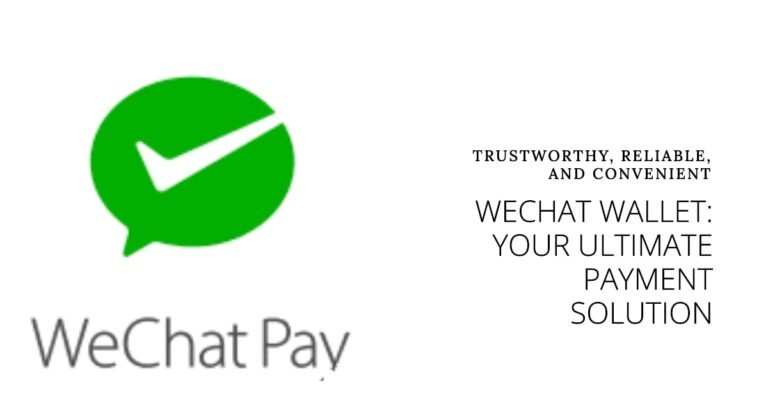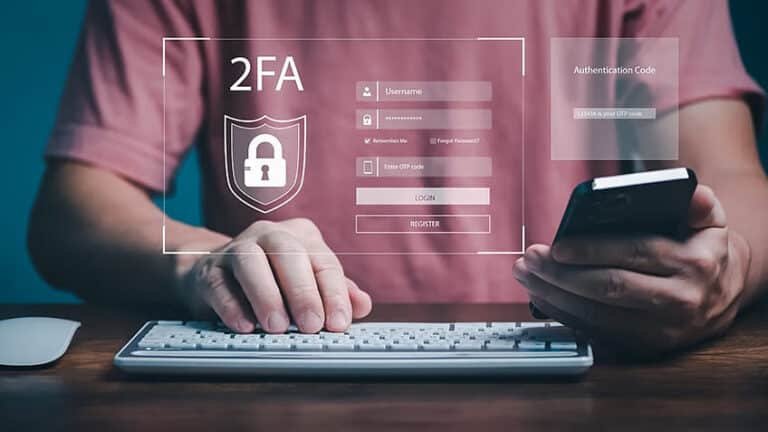What Happens if You Send Money to the Wrong Person? (A Guide for Cash App, Venmo, and Zelle)
That sinking feeling when you realize you’ve sent money to a complete stranger is all too common in the age of instant payments. The convenience of a few taps on your phone can quickly turn to dread when a simple typo sends your hard-earned cash into the digital ether. What happens if you send money to the wrong person on platforms like Cash App, Venmo, or Zelle?
This guide is designed to walk you through what to do if you accidentally sent money to the wrong person. We’ll provide a clear, step-by-step process for each major app, explain why getting your money back can be difficult, and offer crucial prevention tips to help you avoid this stressful situation in the future.
Disclaimer: This article is for informational purposes only and does not constitute legal or financial advice. The policies of payment apps can change. Please consult the official help centers for the most current information and contact your financial institution for advice specific to your situation.
Cash App vs. Venmo vs. Zelle: Accidental Payment Policies at a Glance
| Feature | Cash App | Venmo | Zelle |
|---|---|---|---|
| Can you cancel a completed payment? | No | No | No |
| Best First Step | Use the “Refund” request feature in-app. | Send a “Charge Request” to the recipient. | Contact your bank immediately. |
| Can you cancel a pending payment? | Yes (if recipient hasn’t accepted) | Yes (if sent to an unregistered user) | Yes (if recipient isn’t enrolled) |
| Who holds the money? | Cash App Balance | Venmo Balance | Your Bank Account |
| Primary Support Contact | Cash App Support | Venmo Support | Your Bank’s Fraud/Dispute Dept. |
The Hard Truth About Instant Payments: Why It’s Difficult to Get Your Money Back
The reason digital wallets and peer-to-peer (P2P) payment apps are so popular is their speed. They’re designed to be the digital equivalent of handing someone cash. When you send money, the funds are often immediately available to the recipient in their account. This instant transfer is what makes these services so convenient, but it’s also why reversing a completed payment is so difficult.
Once a payment is authorized by you and sent to an active account, it is typically considered final by the app’s terms of service. This is a key distinction from an unauthorized, fraudulent transaction, where someone gains access to your account without your permission. A payment you made by mistake, even with a typo, is still an authorized payment in the eyes of the company. You can learn more about how to protect yourself from these kinds of issues in our ultimate guide to PayPal security.
Once a payment is sent to an active account, it is considered final. The app cannot force the recipient to return the money.
Why Your Bank Says ‘No’: Understanding Authorized vs. Unauthorized Payments
The legal framework for electronic transfers, primarily governed by the Electronic Fund Transfer Act (EFTA), or Regulation E, makes a crucial distinction. Unauthorized transfers are those made without your permission, such as a stolen debit card or a hacked account. For these, your bank is legally obligated to investigate and may cover your losses. However, an erroneous transfer, where you willingly authorized the transaction but made a mistake (like a typo in the username), falls outside the scope of this protection. This is why the burden of recovery often falls on you and the recipient.
Think of it like your debit card. If a hacker steals your card number and uses it, that’s unauthorized. Your bank protects you. If you hand your card to a friend to buy you coffee and they buy the wrong kind, that’s an authorized payment you regret. The bank sees your mistaken P2P payment the same way. For a broader look at this topic, you can check out our article on how safe mobile wallets are.
The Problem of the “Gray Area”
While most P2P payments are treated as authorized, there is a growing “gray area” of mistaken payments. The Consumer Financial Protection Bureau (CFPB) has put pressure on banks and payment apps to assist in these situations, but it is not a federal requirement. This means some institutions may be more helpful than others, but it is never a guarantee.
This harsh reality can be stressful, but knowing what you’re up against is the first step to a successful recovery. Let’s move on to the immediate, actionable steps you can take.
Your First 5 Minutes: Immediate Steps to Take Regardless of the App
No matter which app you used, speed is critical. Follow these steps the moment you realize your mistake.
- Don’t Panic, Act Fast. The faster you act, the higher your slim chances of recovery become. Every second that passes gives the recipient more time to spend the funds.
- Check the Transaction Status. Immediately open the app and look at the transaction. Is it still “pending”? This usually only happens if the recipient’s phone number or email is not yet associated with a registered account. If the payment is pending, you may see an option to cancel it. This is your best-case scenario.
- Take a Screenshot. Document everything: the transaction ID, the recipient’s details (even if they’re wrong), the amount, and the time. This information is crucial if you need to contact customer support or your bank.
- Contact the Recipient (If Possible). If you were able to identify the recipient’s $Cashtag or username, try to send a polite, non-threatening message explaining the situation. A simple message like, “Hi, I think I accidentally sent you some money. Would you be able to please send it back? I can provide the transaction details to confirm.” Many people will be honest and return the money.
Taking these initial steps can make all the difference. Now, let’s dive into the specifics for each individual payment app, starting with Cash App.
What Happens if You Send Money to the Wrong Person on Cash App?
Cash App is one of the most popular P2P apps, but it can be unforgiving with mistaken payments.
Can You Cancel a Completed Cash App Payment?
According to Cash App’s official policy on “I sent money to the wrong account,” once a payment has been completed and sent to an active $Cashtag, it cannot be canceled. The funds are immediately available to the recipient. The only time a payment can be canceled is if the recipient has not yet accepted it, which is rare as most users are already linked. If a payment is pending, a “Cancel” button will appear on the transaction receipt.
Step-by-Step Guide to Requesting a Refund on Cash App
The primary way to try and get your money back is to request it from the recipient.
- From the home screen, tap the Activity tab.
- Find the payment you want to get back and tap on it.
- Tap the
...icon in the top right corner. - Select Refund.
- A refund request will be sent to the recipient. They will have to accept it for you to get your money back.
What if they won’t send it back? Unfortunately, the recipient is not obligated to return the money. If they ignore your request, there is little Cash App can do to force a refund.
Disputing a Cash App Transaction: When Does It Work?
You can file a dispute through Cash App support, but it’s important to understand the process. The dispute process is primarily for unauthorized transactions—meaning your account was used without your permission. For a mistaken payment, the dispute is often less likely to succeed because you authorized the payment yourself. You should still report the issue to support, providing the screenshot you took earlier.
Cash App Scams vs. Mistaken Payments
Many users ask, “Does Cash App refund me if scammed?” Recovery from scams is also very difficult. If you were tricked into willingly sending money, it is considered an authorized payment. However, you should still report the scam to Cash App and your bank immediately. Common scams include an “accidental” payment reversal scam where a scammer sends you money and asks you to return it, only to reverse the original payment later. To learn more about how to protect yourself, read our guide on how to avoid online payment scams.
Even with these limited options, your next best bet is to understand the different policies of other major payment platforms. Let’s look at how Venmo handles accidental payments.
What Happens if I Pay the Wrong Person on Venmo?
Venmo payments share the same instant-transfer philosophy, making them similarly hard to reverse.
Can Venmo Payments Be Reversed?
Venmo’s policy is similar to Cash App’s: payments to an existing Venmo user are instant and cannot be canceled or reversed once sent. For more details, you can refer to Venmo’s official help article on accidentally paying a stranger.
How to Get Your Money Back on Venmo
Venmo provides two main avenues for recovery, but both rely on the recipient’s cooperation.
- Method 1: The “Take Back” Feature. This feature only works for payments sent to an inactive phone number or email address. The payment will show as “pending” in your feed. You can tap on it and select Take Back to cancel it.
- Method 2: Sending a Charge Request. This is your best option if the payment completed. Go to the “Pay & Request” screen and send a new request to the person for the same amount. Be sure to include a clear, polite note explaining the mistake.
Contacting Venmo Support for Help
If the recipient is uncooperative, you should contact Venmo support. You’ll need to provide:
- The username of the person you paid by mistake
- The amount and date of the payment
- The username, phone number, and email of the person you meant to pay
Venmo support will attempt to contact the recipient on your behalf and mediate the situation, but they cannot force the user to return the funds. Setting realistic expectations is key here.
Venmo’s policies offer a similar level of protection to Cash App’s, but Zelle’s model is fundamentally different and requires a different approach.
What Happens if You Zelle the Wrong Person Money?
Zelle payments are often considered even riskier than other P2P apps because of how they work.
Why Zelle is Different (And Often Riskier)
Unlike Cash App or Venmo, Zelle is not a digital wallet. It’s a bank-to-bank transfer service. When you send money with Zelle, it moves directly from your bank account to the recipient’s bank account, often within minutes. This makes it even more like sending cash, as the transaction is fully completed on the banking side.
How to Cancel a Zelle Payment
You can only cancel a Zelle payment if the recipient is not yet enrolled with Zelle. As their official FAQ states, if you sent money to a phone number or email that is not yet linked to a bank account, the payment will be pending, and you can cancel it through your bank’s Zelle experience. Once the recipient is enrolled and the funds are delivered, the payment is irreversible.
For a beginner’s guide to the platform, read how to use Zelle for beginners.
Will Zelle or Your Bank Refund the Money?
Zelle itself does not offer a purchase or payment protection program for mistaken transfers. Your primary recourse is to contact your own bank immediately. Report the error and ask them to intervene. Because the money is a bank-to-bank transfer, they may have more options than a third-party app.
The Role of Regulation E and Disputing with Your Bank
The Electronic Fund Transfer Act (EFTA), or Regulation E, is a federal law that protects consumers from unauthorized electronic fund transfers. While this law does not cover a mistake where you willingly sent money to the wrong person, some banks may be willing to investigate the claim. The Consumer Financial Protection Bureau (CFPB) has pushed banks to be more proactive in these situations, a topic they have explored in their guidance on Electronic Fund Transfers. You should file a formal dispute with your bank, but understand that it is not a guaranteed refund.
For mistaken payments, the best course of action is to contact your bank immediately and explain the situation. The bank’s response will depend on its own internal policies, but the sooner you act, the better.
If all else fails and the recipient refuses to cooperate, you’ll need to explore other options.
When All Else Fails: Your Last Resort Options
When the app and the recipient have both said no, you are in a difficult position. These final steps are a long shot, but they are all you have left.
- Small Claims Court: This is a legal option for large amounts, but the main challenge is identifying the recipient’s legal name and address to serve them court papers, which the app will not provide for privacy reasons.
- Reporting to the FTC and IC3: While reporting to the Federal Trade Commission (FTC) or the Internet Crime Complaint Center (IC3) will not get your money back directly, it’s crucial. It helps law enforcement track scam patterns and can lead to actions that protect future victims.
- The Bank Appeal Letter: As a final appeal, you can write a formal letter to your bank’s customer advocacy or executive complaints department. Clearly state the facts, the steps you have taken, and reference the CFPB’s interest in resolving mistaken payments. This is a long shot, but it elevates your complaint above a standard support ticket.
Ultimately, your best defense is a good offense. Prevention is the key to protecting your money.
Prevention is the Best Cure: How to Avoid Sending Money to the Wrong Person
The easiest way to get your money back is to not lose it in the first place.
- Double-check, then triple-check: Always verify the username, $Cashtag, phone number, or email before hitting “send.” Look for typos in every detail.
- Send a small test amount: If you are sending a large sum to a new person, send a test amount of $1 first and confirm they received it.
- Use QR codes: If you’re with the person, use the app’s QR code feature to scan their code directly, which eliminates the risk of a typo.
- Enable security features: For more information on securing your accounts, read our guide on two-factor authentication for banking and how to safely set up a mobile banking app.
- Enable notifications: Turn on push notifications for your P2P apps and bank account. This will give you an instant alert for any transaction, allowing you to react immediately.
- Be wary of lookalike usernames: Scammers often create profiles with slight variations of a friend’s name or username. Always verify the profile picture and transaction history if you have any doubts.
For more information on keeping your personal data safe, learn how to manage your digital financial footprint or discover the most secure way to send money to a stranger.
Let’s address some of the most common questions people have when they find themselves in this situation.
FAQs
What if I sent money to an inactive account?
This is the best-case scenario. If the recipient’s phone number or email is not linked to an active account on the app, the payment will remain “pending.” You can simply cancel the payment from your end, and the funds will be returned to your account. The money is never actually transferred.
Can someone take back money they sent me on Cash App?
Generally, no. A sender cannot reverse a completed payment. However, they can send you a refund request. Be cautious of scams where someone sends you money “by accident” and asks for it back; they may be using a stolen card, and the original payment could eventually be reversed by the bank, leaving you at a loss.
How long does a canceled Zelle payment take to refund?
If you successfully cancel a pending Zelle payment, the funds are typically returned to your bank account almost instantly or within 1-3 business days, depending on your bank’s processing times.
What happens if I send money to a closed Cash App account?
If you send money to a $Cashtag that is linked to a closed account, the payment will typically fail and be automatically returned to your account. The process is usually quick, but can sometimes take a few business days.
Is it illegal for the recipient to keep the money?
Yes. Legally, the money does not belong to the person who received it by mistake. Keeping funds you know you are not entitled to can be considered theft, or “retaining wrongful credit,” and could lead to civil action or even criminal charges in some jurisdictions. You are legally obligated to return the money.
Can my bank reverse the transaction for me?
For Venmo and Cash App, your bank will likely not reverse the transaction because you authorized the payment. They are designed as a personal transfer service and not a protected purchase. For Zelle, which is a bank-to-bank service, your bank may have a better chance of intervening and retrieving the funds, but it is not a guarantee.
Are there time limits for getting a refund?
While there are no hard-and-fast legal deadlines for a mistaken payment, most financial institutions, including P2P apps, have time limits on how long you have to dispute a transaction. For unauthorized transactions (theft), you must report it within 60 days of the statement showing the error. For mistaken payments, acting immediately is critical, as a delay of even a few hours can mean the funds are gone. The longer you wait, the less likely you are to get the money back.
What if I paid the wrong business instead of a person?
If you accidentally paid a business, the process is similar. You should immediately contact the business and explain the mistake. Provide them with the transaction details. If they are an honest business, they will likely issue a refund. If not, you may need to file a formal dispute with your bank, though again, success is not guaranteed.
Conclusion
Navigating a mistaken payment can be incredibly stressful, but by following these steps, you can maximize your chances of recovery. Act immediately by checking the transaction status and using the app’s built-in refund or request features. If those fail, your next step is to contact your bank, especially if you used Zelle. Ultimately, recovery is not guaranteed, which reinforces the importance of prevention. Always double-check recipient information to protect your money and your peace of mind.
Oladepo Babatunde is the founder of TechFinanceGuide.com and a seasoned technology professional specializing in the dynamic intersection of technology and finance. As a Computer Science graduate (HND) with over a decade of hands-on experience in the tech sector since 2011, he combines deep technical knowledge with a passion for financial innovation.
Oladepo’s mission at TechFinanceGuide is to bridge the gap between powerful financial technology and the everyday user. He is committed to delivering well-researched, actionable content that empowers readers to make informed financial decisions, navigate digital payment systems safely, and understand the trends shaping our future. From blockchain and investment tools to cybersecurity and mobile banking, his articles provide clear guidance in an ever-evolving landscape.
Beyond writing, Oladepo remains a dedicated analyst of the tech landscape, constantly evaluating the breakthroughs that reshape global finance. Connect with him on LinkedIn for in-depth discussions and insights on leveraging technology in the world of finance.






